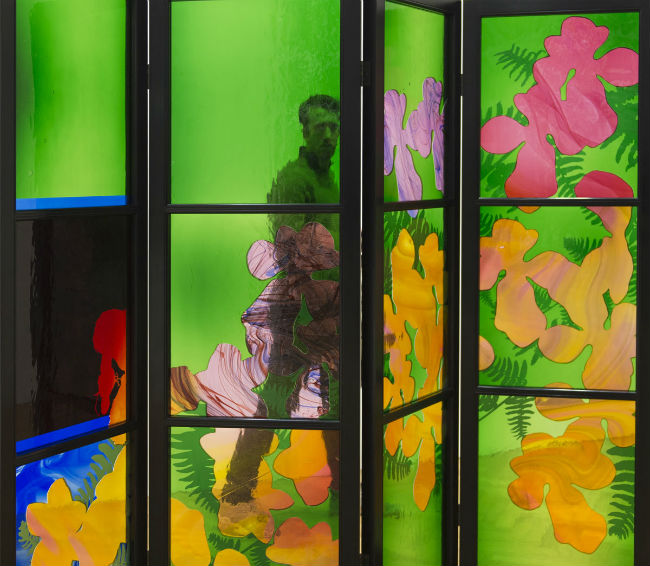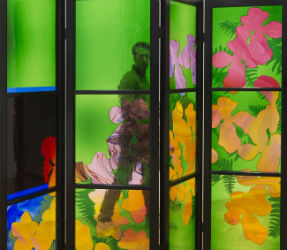
NEW YORK – From March 21 through Aug. 23, the Museum of Arts and Design will present a major exhibition of works by the celebrated architectural artist and painter Brian Clarke (b. 1953, United Kingdom). The first museum exhibition in the U.S. of Clarke’s stained-glass screens, compositions in lead, and related drawings on paper, “Brian Clarke: The Art of Light” showcases the most considerable artistic and technical breakthrough in the thousand-year history of stained glass.
More than 20 stained-glass screens form the centerpiece of the exhibition. Begun in 2015, these works are described by Clarke as “the expression of ideas that started forming in my mind in the ’80s. They possess a cinematic drama that, until now, we haven’t had the technology to express.” Produced using advances developed with and for them, the works dispense with the dividing lead support that has been a necessary component of stained glass through most of its existence. Merging the traditional techniques of glassblowing with the artist’s decades of exploration of the medium of glass, the screens are Clarke’s major independent work of the past four years.
“Brian joins a long and illustrious history of extraordinary glass artists that MAD has championed over the decades and this exhibition will reveal the technological innovation that is integral to Brian’s sublime artistry,” said Chris Scoates, the museum’s director. “There is palpable excitement in the art world today for the creative breakthroughs currently happening in media such as glass and I am extremely excited to share what will be an unforgettable encounter with the union of art and design in contemporary stained glass.”
Consistently, Clarke has pushed the boundaries of stained glass, both in terms of technology and its poetic potential, in tandem with his investigations in painting. His practice in architectural and autonomous stained glass has led to successive innovation and invention in the fabrication of the medium and, through the production of leadless stained glass and the creation of sculptural works made primarily or wholly of lead, he has radically stretched the limits of what stained glass can do and express.
“There is a world that can only be seen through stained glass. It is like no other. The range of experience I can deliver through it is greater than anything I’ve known in my life,” Clarke said. “Many of the greatest artists have been intensely involved with stained glass — Mondrian, Matisse, Albers, Cocteau, De Kooning, Le Corbusier, Richter. I believe the medium has the potential to have the same kind of uplifting impact on our urban engagement as it had on architecture in the 15th century. I want to surpass the Middle Ages, not equal them. This exhibition demonstrates that stained glass has an authority and potential to deal with every human condition,” said Clarke.
He continued, “The history of art and the history of architecture and design are linked like siblings. Modernity wrenched them apart, celebrating portable art as a monetized market and distancing design and architecture into isolated worlds of their own, with interaction between the disciplines moving from creative collaboration into an arbitrary acquaintance. MAD is committed to supporting the healthier, challenging relationship between the arts and I fully behind them in this.”
The exhibition’s more than 100 works, completed by Clarke over the last two decades, will be arranged thematically. In the light-filled fourth floor gallery, Clarke’s impressively scaled, free-standing screens will immerse visitors in exuberant, saturated colors. By contrast, the fifth floor will display the artist’s earlier leaded works, striking a more somber and contemplative chord. The dual presentation of work and materials in relation to light or its absence reinforces central themes in Clarke’s practice, such as morality, modernity and memory.



